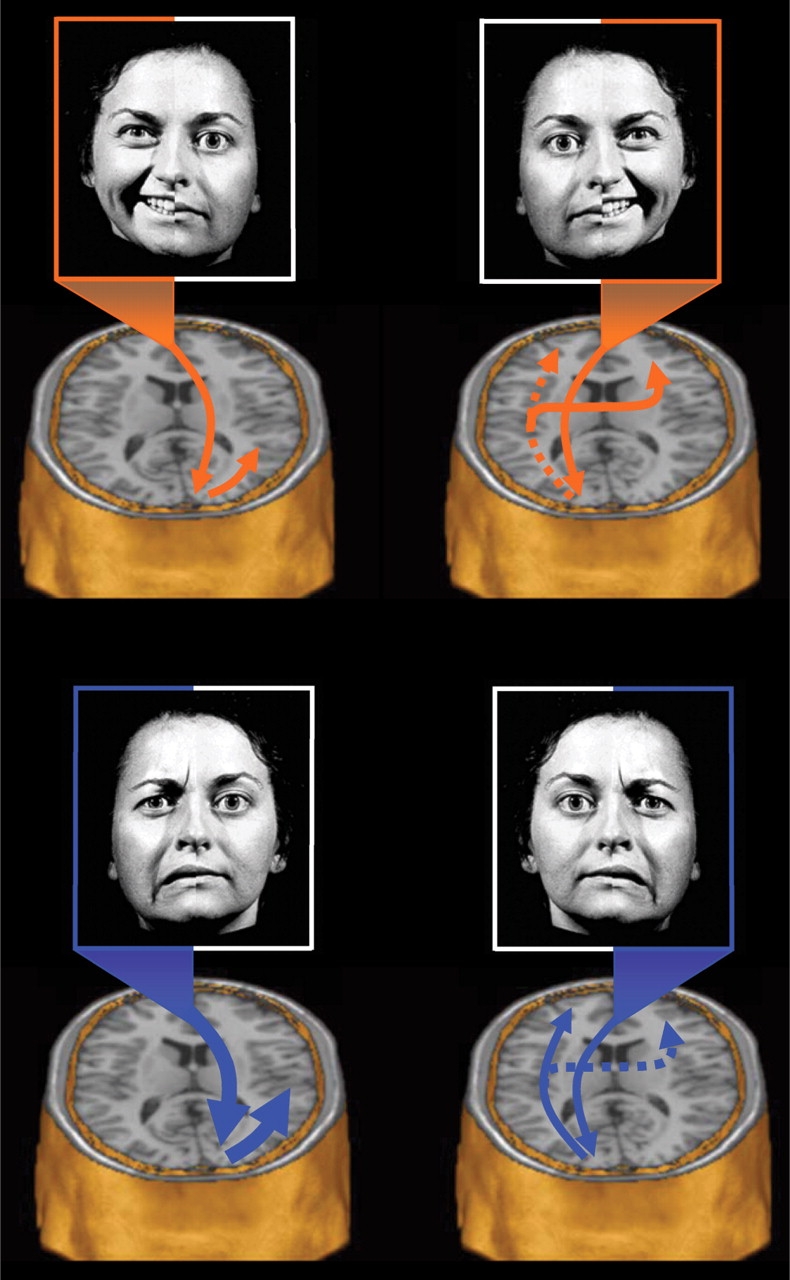Fig. 5.

Proposed model of regional interactions. The present findings were used to outline a tentative model whereby the posterior right hemisphere is dominant for processing all facial affective stimuli regardless of valence, but is also particularly specialized for processing negative affective stimuli. In contrast, the posterior left hemisphere is postulated to be relatively less effective at processing affective stimuli in general and must, therefore, rely on downstream processing within the prefrontal cortex bilaterally to evaluate the significance of the affective stimulus. This prefrontal system appears to recruit the left and right anterior regions in a valence specific manner. Top left: Happy affective stimuli in the LVF are initially projected to the right hemisphere primary visual cortex and then intra-hemispherically to nearby posterior temporal and fusiform regions for further analysis. Top right: In contrast, happy stimuli in the RVF are first projected to the primary visual cortex of the left hemisphere. Because the left hemisphere is relatively less specialized for processing facial affect, such information is sent downstream for further elaborative processing. Happy affect in this hemisphere appears to activate left fusiform and left middle temporal gyri and is further projected bilaterally to the prefrontal cortices for elaboration and comparison, leading to valence specific activation of the right prefrontal cortex. Bottom left: Sad affective stimuli from the LVF would be directly projected to the primary visual cortex of the right hemisphere. Because of the superiority of the right hemisphere for processing affect, and negative affect in particular, very little transfer distance would be required for valence-specific elaboration. Consequently, negative facial affect cues in the LVF would be expected to be more rapidly and efficiently processed than any other affect/visual field combination. Bottom right: In contrast, sad affective stimuli in the RVF would be particularly disadvantaged, as they would be sent to the non-affect dominant left hemisphere. Due to the relative non-specialization of the left hemisphere for processing affect, the information would be subsequently relayed to the anterior regions for further elaboration and comparison. Because there exist many more categories of negative emotion than positive, the processing of negative affect in the left hemisphere is likely to be particularly inefficient. Globally, this model predicts that LVF presentations should generally be superior to RVF presentations, regardless of valence, but further suggests that RVF presentations of happy expressions will typically result in superior processing than identical presentations of sad expressions.
